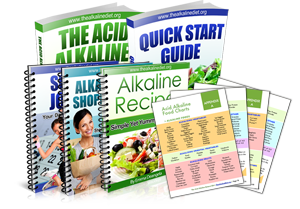Which oils are best to cook with?
June 02, 2017
Foodviki
Tweet
Follow
Tweet


Foodviki
TweetFollowTweet




You have
many options when it comes to selecting fats and oils for cooking. But it’s not
just a matter of choosing oils that are healthy, but also whether
they stay healthy after having been cooked with.
Canola
Canola oil is what comes from extracting the
seeds of a canola plant. It’s inexpensive and commonly used in processed foods
as well as for commercial frying.
Benefits
As with most liquid oils, canola contains
plenty of omega-3 fats, which are the good fats also found in fish. These
have anti-inflammatory properties and can help reduce blood cholesterol.
Only add this oil to your shopping list if you can get it fresh, locally and
from seeds that haven’t been genetically modified.
Downsides
The seeds used to make canola oil can be
genetically modified, which some say causes damage to the environment and
aren’t good for you. Australian manufacturers don’t have to label their
products accordingly, so it’s impossible to know if the seeds are organic or
not.
What’s more, the omega-3 fats in canola oil
go rancid so its healing powers will depend on how well the canola oil has been
kept from production line to kitchen cupboard. A US study also found a link
between cooking with canola oil and reduced lung function.
Peanut
Peanut kernels are pressed to produce this
tasty oil, which is often the pick for frying because it doesn’t absorb a
food’s flavor.
Benefits
Peanut oil has a lot going for it, Stanton
says it keeps well, cooks well and ranks well in the polyunsaturated and monounsaturated
fat stakes, meaning it’s beneficial for blood cholesterol and heart
health. Enjoy it in moderation but aim for healthier options.
Downsides
It has more saturated fat than olive,
avocado, sunflower and sesame oils, and can be quite expensive.
Avocado Oil
The
composition of avocado oil is similar to olive oil. It is primarily
monounsaturated, with some saturated and polyunsaturated mixed in.
It can be
used for many of the same purposes as olive oil. You can cook with it, or use
it cold.
Coconut
The kernels of older coconuts are extracted
to make this on-trend oil.
Benefits
Eating coconut oil can increase the good
cholesterol in your blood and its stable at high temperatures, making it
perfect for cooking. “It produces a crispy bickie,” Stanton says. Resist
eating it by the spoonful straight from the jar. If you’re keen for a coconut
hit, get your hands on the real thing. “Kale and green smoothies are
great but please leave out the coconut oil,” Stanton says
Downsides
It might taste like a tropical paradise but 1
tsp of coconut oilhas almost 4g of saturated fat. That’s a significant
chunk of the 24g recommended daily by the Dietitians Association of Australia.
“I know it’s trendy and it does help your [good] cholesterol a bit, but it
raises bad cholesterol much more,” Stanton says. “A little won’t hurt but
coconut oil is a food for which the evidence is only bad.”
Palm
This red-tinged oil is made by pressing the
fruit of oil palm trees.
Benefits
Palm oil can withstand high temperatures and
is cheap to produce, which is why it’s commonly used for commercial frying and
found in a lot of processed foods. Try to avoid having this oil as much as
possible. “The awful thing is you don’t know where it comes from or which foods
it’s in so it’s difficult to steer clear of,” Stanton says.
Downsides
It’s high in saturated fat and offers little
nutritionally. Most importantly, Stanton says, its production is
environmentally disastrous. The industry has been linked to deforestation,
habitat destruction, animal cruelty and human rights abuses.
Sunflower
As if the beauty of sunflowers wasn’t enough,
their seeds are compressed to make this helpful oil.
Benefits
This golden liquid is high in vitamin E,
which plays a key role in supporting the immune system and has also been linked
to preventing memory disorders, improved lung function and slowing the decline
of people with Alzheimer’s. “You’ll also find those fats that are good for
reducing cholesterol and keeping your heart healthy,” Stanton says. It keeps
well and is inexpensive. Keep it in the cupboard as an alternative to extra
virgin olive oil, but don’t reuse it too often.
Downsides
Sunflower oil retains its nutritional
goodness at high temperatures, but reusing it too many times which is common
thanks to its effectiveness at frying can cause harmful Trans fats to form.
Olive
Olives are crushed and the oil is filtered
and bottled. It’s best fresh and should smell a bit like green grass.
Benefits
“Extra virgin olive oil is far and away
the best oil they don’t come any better,” Stanton says. The reasons are
abundant and so is the supporting research. As well as boasting healthy fats
that help reduce cholesterol and improve heart health, olive oil has
been proven to lower blood pressure.
“There have been a lot of myths about olive
oil, the biggest being that you can’t cook with it,” Stanton says. In fact, she
adds that an Australian study recently proved that extra virgin olive oil has a
higher smoke point (the temperature at which it smokes and starts to burn,
releasing potential carcinogens) than both butter and canola oil. Part with a
couple more dollars to take home a bottle of fresh, Aussie, extra virgin olive
oil. Then enjoy it in, on and with whatever you please.
Downsides
Olive oil is one of the more expensive oils.
If you’re opting for anything other than extra virgin, your cholesterol levels
will still benefit but those other protective powers will be diminished.






















0 comments